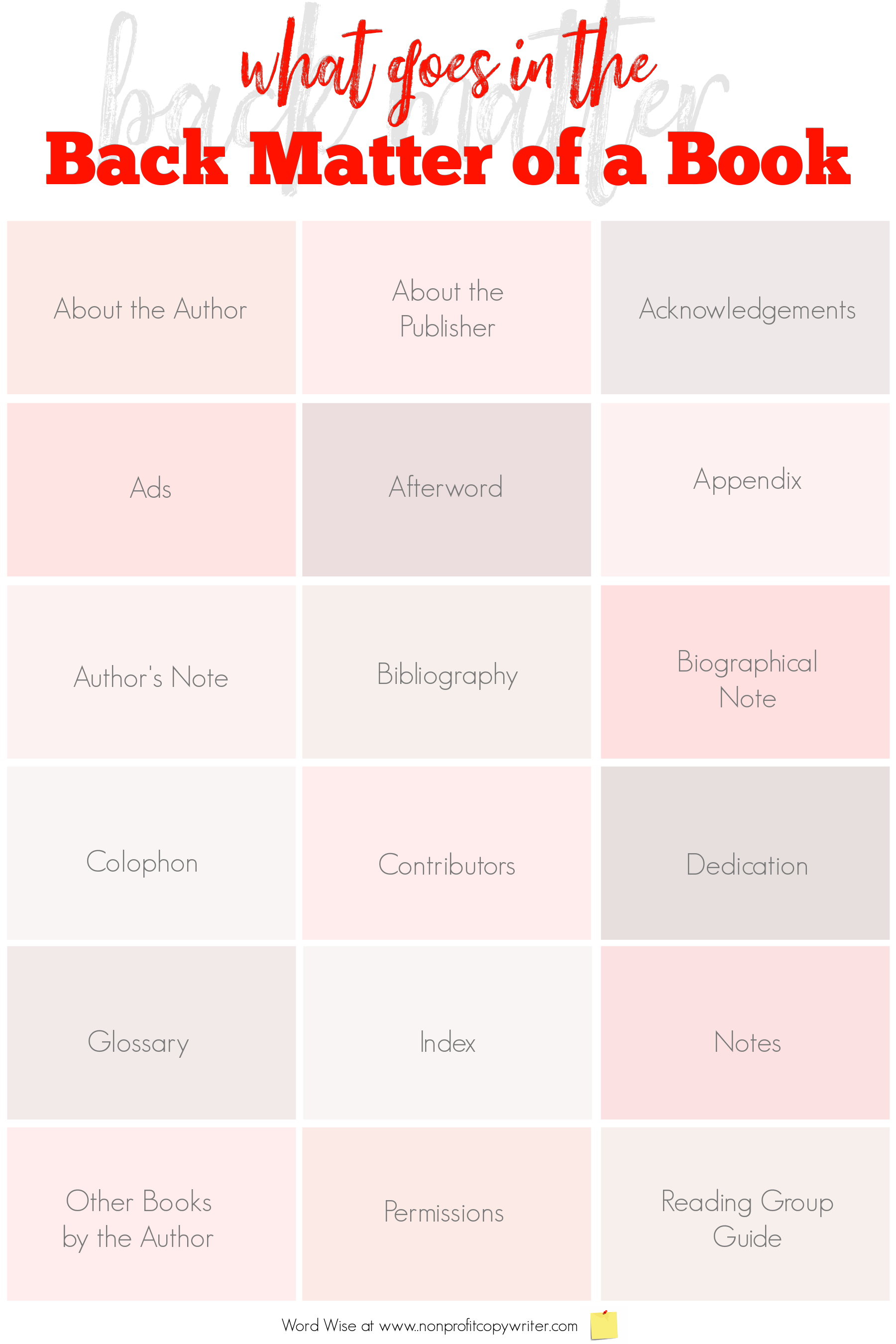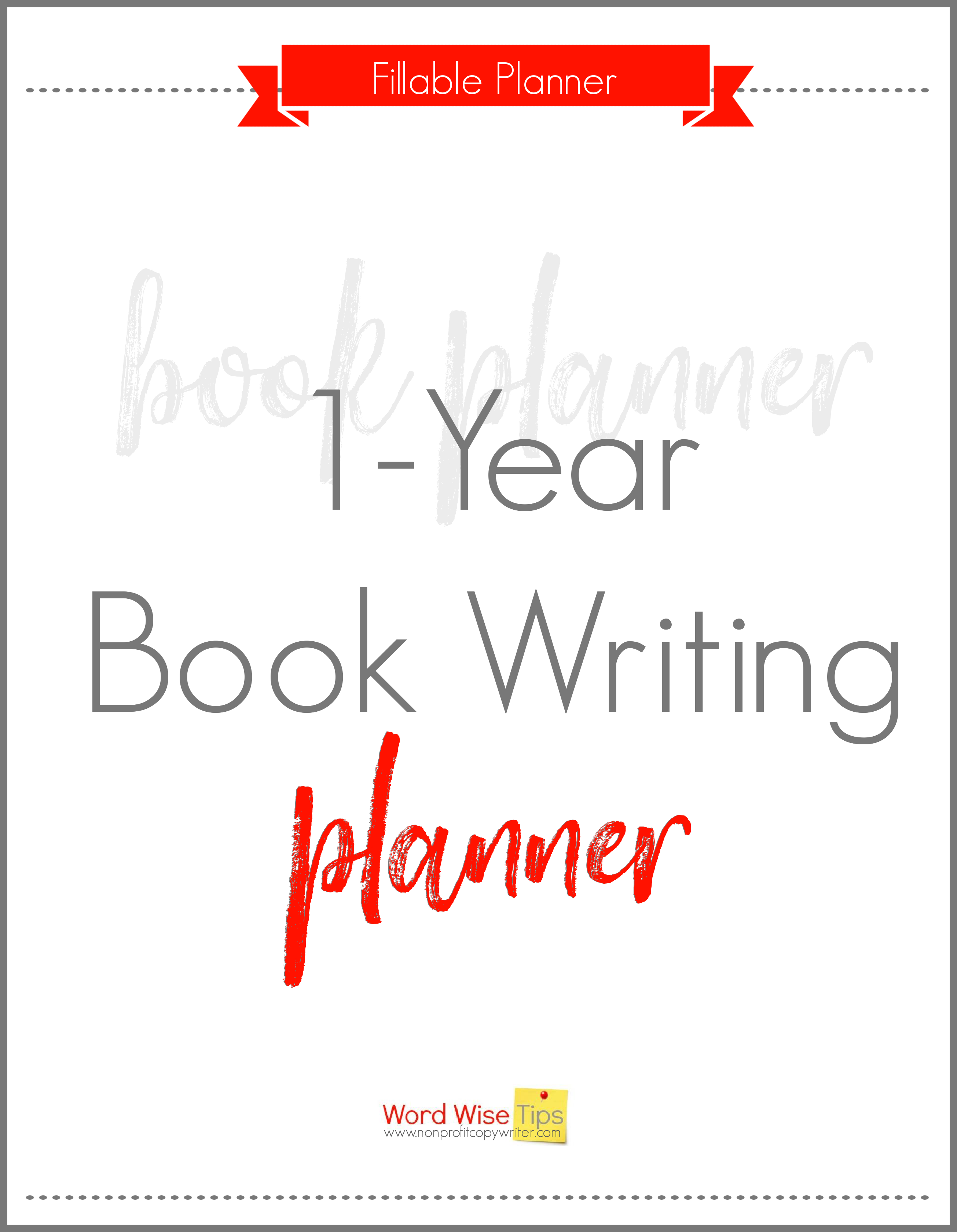Save Time: Get 5 Simple Writing Tips
you can put to use in 10 minutes
The Back Matter of a Book: What to Write After You Write
“The End”
Award-winning writer Kathy Widenhouse has helped hundreds of nonprofits and writers produce successful content , with 750K+ views for her writing tutorials. She is the author of 9 books. See more of Kathy’s content here.
Updated 12.29.2023
You’ve just typed “The End,” but you’re not done with your book just yet. There’s still the issue of the back matter of a book. What is the purpose of the chunk at the end? What should you include? And if you’re self-publishing, how do you decide the order in which to organize the elements in the back of the book?
Here we go …
What is the back of a book called?
It’s called "back matter or "end matter." It’s content that appears at the end of the main text of the book.
While the front matter of a book is the information that introduces what’s to come, back matter provides additional information related to your book’s topic.
What’s the purpose of including back matter in a book?
While front matter provides information that the reader needs before delving into your book content, the back matter gives you a chance to follow up. Here’s where you can thank those who helped you write the book. You can offer the reader a chance to dig deeper with additional information, suggestions for further reading, references, and resources.
What goes in the back matter of a book?
Publishing guides list anywhere from 15-25 elements that appear in back matter. Here’s an alphabetical list of key pieces you can choose to include in the back matter of a book.
- About the Author
Share your author’s biography. - About the Publisher
If your book is published by a printing house, the editors may include a short blurb about the firm. - Acknowledgements/Credits
Who helped you during the process of writing this book? List those who provided professional expertise, editorial expertise, and moral support. - Ads
Use this piece of real estate to promote your additional products and services. - Afterword/Conclusion/Epilogue
You can include your final words as part of the main manuscript, particularly if they’re essential to the message of the book. Or you can lead off your back matter with an afterword, conclusion, or epilogue. - Appendix/Resources/ Suggested Reading
How can readers learn more about this topic? What resources do you recommend? List books, activities, and groups where readers can go to get more information. - Author’s Note
This section gives you the opportunity to share personal circumstances that led you to write the book – “the story behind the story.” - Bibliography/References/Sources
Include this list of books and other source material that you drew upon to write the book. (If your manuscript includes footnotes, then list each one and its direct source in the Notes section.) - Biographical Note/Historical Note
Here’s where to disclose historical significance to the book’s characters or content. - Colophon
That’s a fancy term for information about the book’s publisher – the name, location, date of publication, and logo. The colophon can also include the font type and even paper type, for print books. While often placed in the front matter, you can place the colophon in the back matter so as to not slow the reader from diving into the text. - Contributors
If your book is a collection of content provided by different writers, include author bios for each. - Dedication
While often placed in a book’s front matter, you may prefer to insert the dedication at the end of the book as a capstone. - Glossary
This alphabetical list of terms is particularly useful to the reader if your subject is industry specific or if your book text includes foreign words or dialect that are not a part of the average reader’s vocabulary. - Index
You can create an alphabetical list of names, places, and topics (or have a professional indexer create one for you) with page numbers to which the reader can refer when searching a subject. - Notes/Endnotes
If your manuscript includes footnotes, then list each one in the order it appears in the book (and by chapter, if you have a large number) and its direct source. - Other Books by the Author
Like ads, use this bit of published real estate to point readers to other books you’ve written. If you have room, offer book summaries, photos, and digital links. - Permissions
Figures, images, graphics, tables, illustrations, maps, screenshots, long excerpts, lyrics, artwork: you need to cite permission to print any material that you have not created yourself, is not cited in a footnote, is copyrighted, and that is not in the public domain. - Reading Group Guide
Book clubs, small groups, and individual readers can get more out of your book when you provide discussion questions about its content.
Use this 1-Year Book Writing Planner to get your book done.
What’s the standard order for back matter of a book?
Here’s how the Chicago Manual of Style orders the most common back matter elements.
- Afterword/Conclusion/Epilogue
- Appendix
- Notes
- Glossary
- Bibliography/References
- Contributors
- Index
- Colophon
- Author biography
Why does back matter matter?
There’s no magic formula or rules to follow as you choose the kinds of back matter to include in your book … except one. Use back matter to help your reader go beyond the content of your book.
That can mean more awareness about your subject for readers as they delve into the resources you provide, which includes your other published works. And in turn, back matter creates more fans and more sales for you.
More Book Writing Tips
1-Year Book Writing Planner (Fillable and Re-Usable) ...
Use this Self-Publishing Checklist for a Winning Amazon Release ...
What Goes on the Back Cover of a Book?
How to Publish a Book for Free...
How to Get Book Reviews For Free ...
How to Write a Book Summary that Sells Your Book ...
Why You Should Write an eBook: 5 Reasons to Consider It ...
Book Writing Help: Create a Writing Plan ...
Getting Started Writing a Book ...
See more tips for Writing a Book on my Pinterest board...
Return from The Back Matter of a Book to Nonprofit Copywriter home
As an Amazon Associate I earn from qualifying purchases.
Share This Page

Named to 2022 Writer's Digest list
BEST GENRE/NICHE WRITING WEBSITE


Stop Wasting Time!
Grab your exclusive FREE guide, "5 Simple Writing Tips You Can Put to Use in 10 Minutes or Less"













